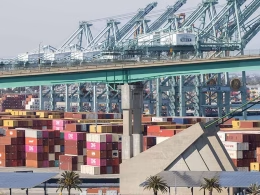A new study titled “Demystifying Carbon Removals in the Context of Offsetting for Sub-Global Net-Zero Targets” challenges widely held views about the role of emission reduction credits (ERCs) and carbon removal credits (CRCs) in achieving net-zero greenhouse gas (GHG) emissions. The study addresses misconceptions that have emerged as nations and corporations increasingly adopt net-zero targets, which require balancing anthropogenic GHG emissions with removals by mid-century to meet the Paris Agreement’s 1.5°C target.
The concept of net-zero emissions has evolved from a scientific formulation into a fundamental principle for climate action across global, national, and corporate levels. Net-zero on a global scale is clear: all remaining GHG emissions must be offset by removals. However, when applied at sub-global levels—such as national or corporate targets—net-zero is less clearly defined. Current sub-global net-zero targets vary significantly in aspects like timing, bindingness, coverage, and the use of offsetting mechanisms.
The study highlights a growing consensus that deep and rapid emission reductions within an entity’s system boundaries are crucial. However, the challenge of eliminating all emissions means that residual emissions—those that remain after all feasible reductions—must be offset to achieve net-zero claims. This is where the debate intensifies, particularly regarding the type of carbon credits used for offsetting. While most agree on the need for carbon credits to meet stringent quality criteria, there is disagreement about whether ERCs, which result from activities reducing GHG emissions, or CRCs, which involve direct GHG removal, are appropriate for sub-global net-zero claims.
The study contends that the prevailing belief that ERCs are insufficient for net-zero offsetting is based on flawed assumptions, particularly the incorrect setting of assessment boundaries. By analysing the impact of both ERCs and CRCs on the net transfer of GHGs to the atmosphere, the researchers demonstrate that both types of credits can achieve the same outcome in terms of global GHG emissions.
This finding has significant implications for the guidance provided to policymakers and voluntary carbon market (VCM) stakeholders. The study suggests that current guidance should be revised to reflect a more accurate understanding of how ERCs and CRCs contribute to net-zero targets, ensuring that decisions are based on robust and comprehensive GHG accounting.
The study’s results challenge the view that only CRCs are suitable for sub-global net-zero targets, calling for a reassessment of what constitutes adequate GHG mitigation beyond an entity’s own value chain. By clarifying the role of ERCs, the study aims to refine the strategies used to achieve net-zero emissions, emphasising the importance of accurate GHG accounting and the need for a balanced approach to using both ERCs and CRCs in climate action initiatives.
In conclusion, the research presented in “Demystifying Carbon Removals in the Context of Offsetting for Sub-Global Net-Zero Targets” provides a critical examination of the assumptions underlying current net-zero strategies and offers new insights that could shape the future of climate policy and corporate sustainability efforts.





















